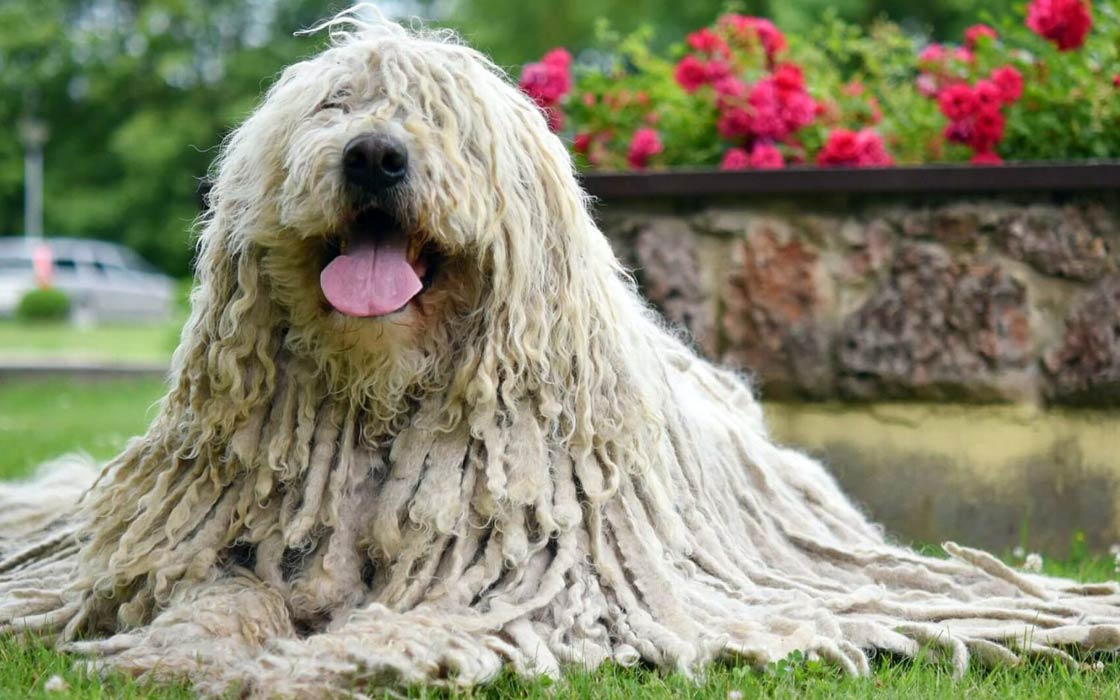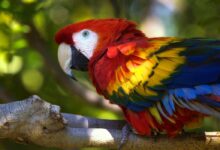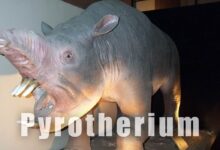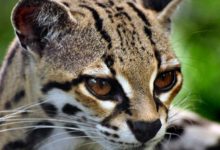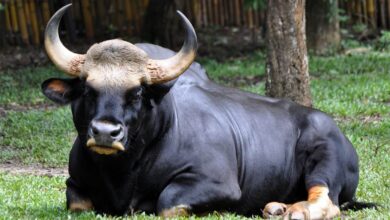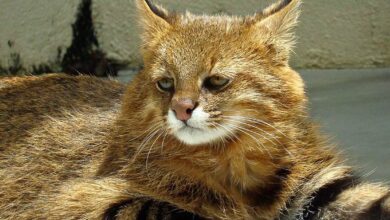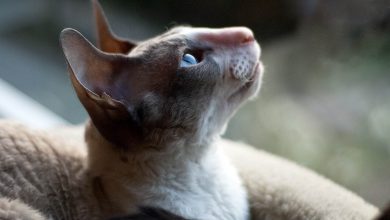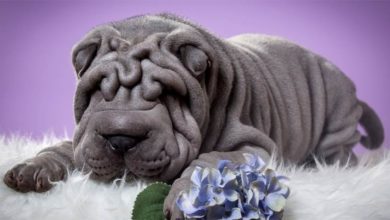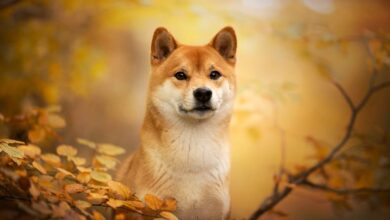Komondor: The Fearless Flock Guardian
The Komondor, with its distinctive corded coat and imposing presence, is a remarkable breed originating from Hungary. Known for its protective instincts and loyalty, the Komondor is an exceptional livestock guardian dog. Its unique appearance and brave temperament make it a standout among canine breeds. Bred for guarding flocks, the Komondor is also a devoted family companion known for its deep bonds with its human pack. The breed’s intelligence and independence make it a fascinating and formidable presence in the canine world.
FCI Classification
- Group 1 Sheepdogs and Cattle Dogs (except Swiss Cattle Dogs)
- Section 1 Sheepdogs
- Without working trial
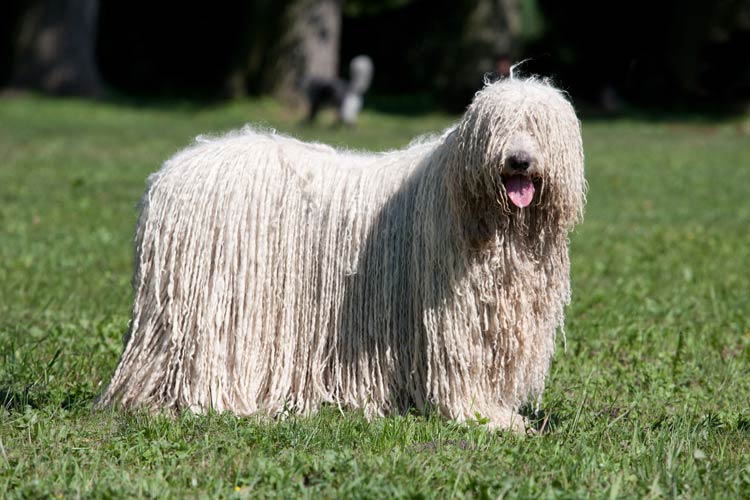
History of the Breed
The Komondor’s history dates back over a thousand years to the steppes of Hungary, where it was brought by nomadic tribes. The breed was primarily used to guard flocks of sheep and cattle from predators and thieves. The Komondor’s thick, corded coat provided protection against the elements and attacks.
The breed’s origins can be traced to the Magyar tribes that settled in Hungary around 895 AD. They brought their livestock and guardian dogs, including the ancestors of the Komondor. The breed’s role was to protect the valuable herds from wolves, bears, and human thieves. The Komondor’s imposing appearance and fierce loyalty made it an ideal protector in the vast, open plains.
The breed’s coat, which forms naturally into cords, is a unique adaptation that provided both camouflage and protection. The cords helped the dog blend in with the flock, making it difficult for predators to single out. Additionally, the dense coat shielded the dog from bites and harsh weather conditions, ensuring it could perform its duties year-round.

Characteristics
The Komondor is easily recognizable by its long, white, corded coat, which resembles dreadlocks. This coat serves a dual purpose: it provides insulation and protects against bites. The breed has a large, muscular build with a robust skeletal structure, enabling it to perform its guardian duties effectively.
Temperamentally, the Komondor is known for its courage and independence. It is highly protective of its family and flock, often displaying a reserved demeanor towards strangers. Socialization from a young age is crucial to ensure the Komondor is well-adjusted. Despite its formidable presence, the Komondor is gentle and affectionate with its family members.
The breed requires ample space to roam and exercise, making it more suitable for rural or suburban settings with large yards. Regular grooming is necessary to maintain the coat, although the cords themselves do not require trimming. The coat must be kept clean and dry to prevent matting and skin infections. The grooming process involves separating the cords by hand to maintain their distinct shape and prevent them from becoming tangled.
Komondors are intelligent and independent thinkers, a trait necessary for a guardian dog that must make decisions without human guidance. This independence can sometimes be mistaken for stubbornness, but with consistent training and firm leadership, the Komondor can be a well-behaved and obedient companion. Training should begin early, focusing on socialization, basic commands, and establishing boundaries.
Komondors are also known for their strong territorial instincts. They are natural watchdogs and will bark to alert their owners of any perceived threats. This makes them excellent protectors, but it also means they require proper training to distinguish between actual dangers and everyday occurrences.
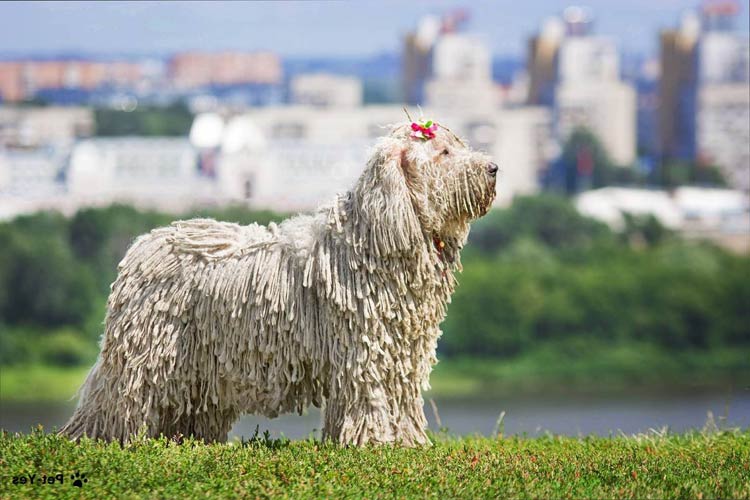
Health Condition
Komondors are generally healthy but can be prone to certain genetic health issues, such as hip dysplasia and bloat. Regular veterinary check-ups, a balanced diet, and proper exercise are essential to maintaining their health. Due to their heavy coat, they are also susceptible to skin infections if not properly groomed.
Hip dysplasia is a common concern in large breeds, including the Komondor. This condition can lead to arthritis and mobility issues, but it can be managed with proper care, including maintaining a healthy weight and providing joint supplements as recommended by a veterinarian. Regular exercise helps keep the dog’s muscles strong and supports joint health.
Bloat, or gastric torsion, is a life-threatening condition that can affect deep-chested breeds like the Komondor. Owners should be aware of the symptoms, which include a swollen abdomen, restlessness, and unproductive vomiting. Immediate veterinary attention is required if bloat is suspected. Feeding smaller, more frequent meals and avoiding vigorous exercise around mealtime can help reduce the risk.
The breed’s dense coat also requires attention to prevent skin infections. The cords should be kept clean and free of debris, and the dog’s skin should be checked regularly for signs of irritation or infection. Bathing should be done as needed, with careful drying to prevent moisture from being trapped in the cords.

Historical curiosity
A notable historical reference to the Komondor highlights its role during the Hungarian Revolution of 1848, where these dogs were used to guard military encampments. Their loyalty and protective nature were invaluable during these tumultuous times. The Komondor’s ability to guard livestock and property extended to protecting human interests during times of conflict, showcasing their versatility and unwavering dedication.
Detailed Data and Dimensions / Size
- Height at the shoulder:
- Males: 70-80 cm (27.6-31.5 inches)
- Females: 65-70 cm (25.6-27.6 inches)
- Weight:
- Males: 50-60 kg (110-132 lbs)
- Females: 40-50 kg (88-110 lbs)
- Coat: Long, white, corded coat resembling dreadlocks
- Lifespan: 10-12 years
- Body: Large, muscular build with a robust skeletal structure
- Eyes: Dark brown, expressing alertness and intelligence
- Ears: Medium-sized, hanging down close to the head
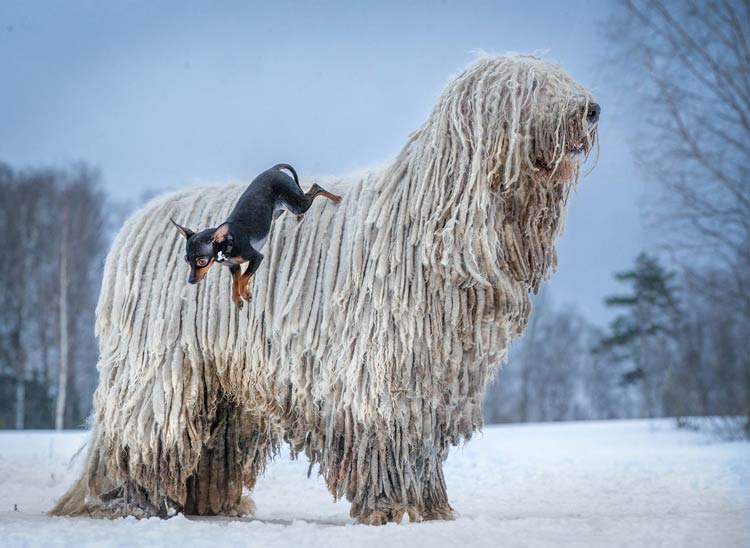
Interesting Facts
- The Komondor’s coat can take up to two years to fully develop into cords.
- Despite their heavy coats, Komondors are agile and quick, capable of defending their flocks effectively.
- The breed’s distinctive appearance often draws attention, but their independent nature means they are best suited to experienced dog owners familiar with livestock guardian breeds.
- The Komondor is a national treasure in Hungary, with its image appearing in Hungarian folklore and art.
- In addition to their traditional roles as livestock guardians, Komondors have also been used in modern times as police and military dogs, thanks to their keen instincts and protective nature.
- The Komondor’s unique coat requires specialized grooming techniques, often involving professional groomers experienced with corded breeds.


